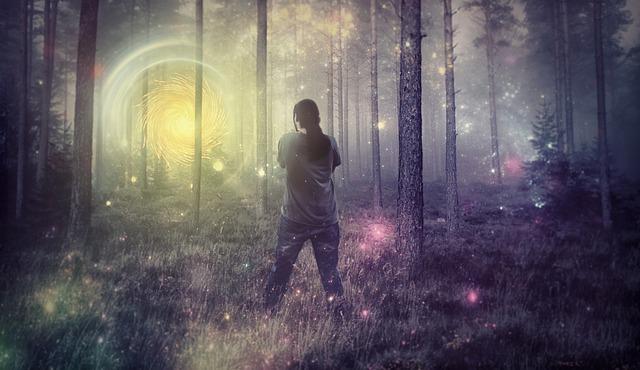
The mind is a highly effective instrument. The brain controls emotions, thoughts, and behaviors, as well as defines people’s realities.
A malfunction in the brain can occur when a mental health issue arises. Misunderstandings between what is true and what is imagined can result from changes in the brain when this occurs.
Distortions in reality caused by delusions and hallucinations are extremely challenging for a person to comprehend.
While the delusory disorder is one type of mental illness (Delusional Disorder), delusion and hallucination are frequently associated with other issues.
The distinction between these two circumstances can assist you in determining the best course of action.
Read also: Why do difficult experiences have the potential to transform us
What is the difference between delusion and hallucination?
What is Delusion?
A delusion is a false belief that is based on an incorrect interpretation of reality. Delusions are unshakable, even when presented with contradictory evidence.
People who experience delusions often hold onto their beliefs regardless of how illogical or extreme they may seem to others.
Delusions can be categorized into different types depending on their content
Types of delusion
Persecutory delusions
Persecutory delusions are a type of delusion in which the individual believes that they are being persecuted, targeted, or otherwise harmed by someone.
These delusions can be extremely distressing and can lead to paranoia and obsessive thoughts. People with persecutory delusions often go to great lengths to avoid the perceived threat and may become socially isolated as a result.
Grandiose delusions
Grandiose delusions, also known as delusions of grandeur, are a type of mental illness in which a person has an inflated sense of importance or power.
People with grandiose delusions often believe they are famous celebrities or historical figures, and they may have an unrealistic sense of entitlement.
Grandiose delusions can be accompanied by other symptoms, such as paranoia, hallucinations, and disorganized thinking.
Referential delusions
Referential delusions are a type of delusion in which the person believes that innocuous events or comments are actually about them.
These delusions can be quite troubling, as they can lead the person to believe that they are being watched or talked about constantly.
In some cases, people with referential delusions may even believe that they are the subject of a conspiracy. Although these delusions can be very distressing, it is important to remember that they are not based on reality.
Somatic delusions
Somatic delusions are a type of delusion that involves the belief that you have a physical ailment or condition, even though there is no evidence to support it.
Somatic delusions can be very distressing, as sufferers may believe that they are suffering from a serious illness, such as cancer.
Often, somatic delusions will result in sufferers seeking medical help, which can lead to unnecessary and costly tests and treatments. In some cases, somatic delusions can also lead to self-harm or suicide.
Erotomanic delusions
Erotomanic delusions are a type of delusion in which the sufferer believes that someone is in love with them, even though this person has never shown any interest in them.
In some cases, the object of the sufferer’s affections may be a celebrity or public figure who is completely unattainable. In other cases, the sufferer may believe that a friend, colleague, or acquaintance is secretly in love with them.
Erotomanic delusions can cause great distress and anxiety, as the sufferer may go to extreme lengths to try to win over the object of their affections.
This can lead to stalking behaviors and harassment.
Read also: Flexible Thinking Is Required to Overcome Depression
What is Hallucination?
A hallucination is a false sensory experience that occurs without an external stimulus. Hallucinations can affect any of the five senses but are most commonly associated with visual and auditory experiences.
People who experience hallucinations may see, hear, smell, taste, or feel things that are not actually there.
Like delusions, hallucinations can be categorized into different types depending on their content.
Types of hallucination
Visual hallucinations
Visual hallucinations are a type of hallucination that involves seeing things that are not actually there.
They can be very vivid and lifelike and often occur in people with certain mental health conditions, such as schizophrenia. Visual hallucinations can also be a side effect of some medications or a result of sleep deprivation.
In most cases, visual hallucinations are not harmful and do not require treatment
Auditory hallucinations
Auditory hallucinations are those that involve hearing things that are not actually there. This may include voices or music.
For some people, these hallucinations can be very realistic and may feel as though they are coming from outside of themselves.
For others, the experiences may be less clear.
Auditory hallucinations are generally categorized into two types: those that are persistent and those that are intermittent. Persistent auditory hallucinations are those that occur often and last for a long period of time.
Intermittent auditory hallucinations, on the other hand, are less frequent and tend to be shorter in duration.
Olfactory hallucinations
Olfactory hallucinations are a type of hallucination that involves smelling things that are not actually there. While this can be a symptom of some mental disorders, it can also occur in healthy individuals.
Olfactory hallucinations can be triggered by a number of factors, including sleep deprivation, stress, and certain medications. In most cases, these hallucinations are short-lived and harmless.
However, if they persist or become disruptive, it is important to seek medical help.
Olfactory hallucinations are a type of hallucination that involves smelling things that are not actually there. While this can be a symptom of some mental disorders, it can also occur in healthy individuals.
Olfactory hallucinations can be triggered by a number of factors, including sleep deprivation, stress, and certain medications.
In most cases, these hallucinations are short-lived and harmless. However, if they persist or become disruptive, it is important to seek medical help.
Gustatory hallucinations
Gustatory hallucinations are relatively rare, occurring in less than 5% of the population. These hallucinations involve tasting things that are not actually there, such as a certain food or flavor.
The vast majority of gustatory hallucinations are pleasant, often involving the taste of sweets or other goodies. However, some people do experience bitter or unpleasant tastes.
Gustatory hallucinations can be caused by a variety of factors, including certain medications, medical conditions, and even psychiatric disorders.
Tactile hallucinations
Tactile hallucinations are a type of hallucination that involves feeling things that are not actually there.
These can take many different forms, from the feeling of someone touching you to the sensation of insects crawling on your skin.
In some cases, people with tactile hallucinations may even feel as though they are inside-out or their organs are rearranging themselves.
Read also: A Study Finds That Impaired Brain Connections Are Linked To Autism

How Are Delusions and Hallucinations Different?
Delusions and hallucinations both involve false beliefs or experiences. However, there are some key differences between the two.
Delusions are a type of fixed belief, meaning that they are held despite evidence to the contrary.
For example, someone with Paranoid Personality Disorder may believe that other people are constantly plotting against them, even when there is no evidence to support this claim.
Hallucinations, on the other hand, are false sensory experiences. This means that they involve seeing, hearing, or feeling things that are not actually there.
Hallucinations can be a symptom of various mental disorders, but they can also occur in healthy individuals.
Read also: How Common Life Events Can Lead to Emotional Crises
What Causes Delusions and Hallucinations?
The exact causes of delusions and hallucinations are not fully understood. However, both are thought to be the result of a combination of biological and psychological factors.
Biological factors
A number of studies have shown that delusions and hallucinations can be linked to abnormalities in the brain.
For example, some research has found that people with schizophrenia tend to have an enlarged ventricle, a region of the brain that is responsible for processing information.
Other studies have found that people with delusions or hallucinations are more likely to have a family member with a mental disorder.
This suggests that there may be a genetic component to these experiences.
Psychological factors
Delusions and hallucinations can also be triggered by psychological factors, such as stress or trauma.
For example, many people who experience delusions or hallucinations report a history of abuse or neglect. It is thought that these experiences may cause changes in the brain that make people more susceptible to false beliefs or sensory experiences.
Read also: Emotional Awareness – Feel Your Feelings Can Help You Heal The Trauma
The takeaway
Delusions and hallucinations are both false beliefs or experiences. While they share some similarities, there are also some key differences between the two.
Delusions are a type of fixed belief, while hallucinations involve false sensory experiences. Both can be caused by a combination of biological and psychological factors.
If you experience delusions or hallucinations that are disruptive or distressing, it is important to seek professional help.



